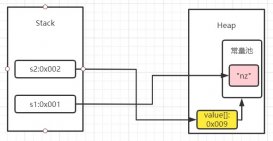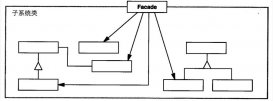Junit这种老技术,现在又拿出来说,不为别的,某种程度上来说,更是为了要说明它在项目中的重要性。
凭本人的感觉和经验来说,在项目中完全按标准都写Junit用例覆盖大部分业务代码的,应该不会超过一半。
刚好前段时间写了一些关于SpringBoot的帖子,正好现在把Junit再拿出来从几个方面再说一下,也算是给一些新手参考了。
那么先简单说一下为什么要写测试用例
1. 可以避免测试点的遗漏,为了更好的进行测试,可以提高测试效率
2. 可以自动测试,可以在项目打包前进行测试校验
3. 可以及时发现因为修改代码导致新的问题的出现,并及时解决
那么本文从以下几点来说明怎么使用Junit,Junit4比3要方便很多,细节大家可以自己了解下,主要就是版本4中对方法命名格式不再有要求,不再需要继承TestCase,一切都基于注解实现。
1、SpringBoot Web项目中中如何使用Junit
创建一个普通的Java类,在Junit4中不再需要继承TestCase类了。
因为我们是Web项目,所以在创建的Java类中添加注解:
|
1
2
3
|
@RunWith(SpringJUnit4ClassRunner.class) // SpringJUnit支持,由此引入Spring-Test框架支持! @SpringApplicationConfiguration(classes = SpringBootSampleApplication.class) // 指定我们SpringBoot工程的Application启动类@WebAppConfiguration // 由于是Web项目,Junit需要模拟ServletContext,因此我们需要给我们的测试类加上@WebAppConfiguration。 |
接下来就可以编写测试方法了,测试方法使用@Test注解标注即可。
在该类中我们可以像平常开发一样,直接@Autowired来注入我们要测试的类实例。
下面是完整代码:
|
1
2
3
4
5
6
7
8
9
10
11
12
13
14
15
16
17
18
19
20
21
22
23
24
25
26
27
28
29
30
31
32
33
34
35
36
37
38
39
40
41
42
43
|
package org.springboot.sample;import static org.junit.Assert.assertArrayEquals;import org.junit.Test;import org.junit.runner.RunWith;import org.springboot.sample.service.StudentService;import org.springframework.beans.factory.annotation.Autowired;import org.springframework.boot.test.SpringApplicationConfiguration;import org.springframework.test.context.junit4.SpringJUnit4ClassRunner;import org.springframework.test.context.web.WebAppConfiguration;/** * * @author 单红宇(365384722) * @create 2016年2月23日 */@RunWith(SpringJUnit4ClassRunner.class)@SpringApplicationConfiguration(classes = SpringBootSampleApplication.class)@WebAppConfigurationpublic class StudentTest { @Autowired private StudentService studentService; @Test public void likeName() { assertArrayEquals( new Object[]{ studentService.likeName("小明2").size() > 0, studentService.likeName("坏").size() > 0, studentService.likeName("莉莉").size() > 0 }, new Object[]{ true, false, true } );// assertTrue(studentService.likeName("小明2").size() > 0); }} |
接下来,你需要新增无数个测试类,编写无数个测试方法来保障我们开发完的程序的有效性。
2、Junit基本注解介绍
|
1
2
3
4
5
6
7
8
9
10
11
12
13
14
15
16
17
18
19
20
21
22
23
|
//在所有测试方法前执行一次,一般在其中写上整体初始化的代码 @BeforeClass//在所有测试方法后执行一次,一般在其中写上销毁和释放资源的代码 @AfterClass//在每个测试方法前执行,一般用来初始化方法(比如我们在测试别的方法时,类中与其他测试方法共享的值已经被改变,为了保证测试结果的有效性,我们会在@Before注解的方法中重置数据) @Before//在每个测试方法后执行,在方法执行完成后要做的事情 @After// 测试方法执行超过1000毫秒后算超时,测试将失败 @Test(timeout = 1000)// 测试方法期望得到的异常类,如果方法执行没有抛出指定的异常,则测试失败 @Test(expected = Exception.class)// 执行测试时将忽略掉此方法,如果用于修饰类,则忽略整个类 @Ignore(“not ready yet”) @Test@RunWith |
在JUnit中有很多个Runner,他们负责调用你的测试代码,每一个Runner都有各自的特殊功能,你要根据需要选择不同的Runner来运行你的测试代码。
如果我们只是简单的做普通Java测试,不涉及spring Web项目,你可以省略@RunWith注解,这样系统会自动使用默认Runner来运行你的代码。
3、参数化测试
Junit为我们提供的参数化测试需要使用 @RunWith(Parameterized.class)
然而因为Junit 使用@RunWith指定一个Runner,在我们更多情况下需要使用@RunWith(SpringJUnit4ClassRunner.class)来测试我们的Spring工程方法,所以我们使用assertArrayEquals 来对方法进行多种可能性测试便可。
下面是关于参数化测试的一个简单例子:
|
1
2
3
4
5
6
7
8
9
10
11
12
13
14
15
16
17
18
19
20
21
22
23
24
25
26
27
28
29
30
31
32
33
34
35
36
37
38
39
40
41
42
43
44
45
46
47
48
49
50
51
|
package org.springboot.sample;import static org.junit.Assert.assertTrue;import java.util.Arrays;import java.util.Collection;import org.junit.Test;import org.junit.runner.RunWith;import org.junit.runners.Parameterized;import org.junit.runners.Parameterized.Parameters;@RunWith(Parameterized.class)public class ParameterTest { private String name; private boolean result; /** * 该构造方法的参数与下面@Parameters注解的方法中的Object数组中值的顺序对应 * @param name * @param result */ public ParameterTest(String name, boolean result) { super(); this.name = name; this.result = result; } @Test public void test() { assertTrue(name.contains("小") == result); } /** * 该方法返回Collection * * @return * @author SHANHY * @create 2016年2月26日 */ @Parameters public static Collection<?> data(){ // Object 数组中值的顺序注意要和上面的构造方法ParameterTest的参数对应 return Arrays.asList(new Object[][]{ {"小明2", true}, {"坏", false}, {"莉莉", false}, }); }} |
4、打包测试
正常情况下我们写了5个测试类,我们需要一个一个执行。
打包测试,就是新增一个类,然后将我们写好的其他测试类配置在一起,然后直接运行这个类就达到同时运行其他几个测试的目的。
代码如下:
|
1
2
3
4
5
|
@RunWith(Suite.class) @SuiteClasses({ATest.class, BTest.class, CTest.class}) public class ABCSuite { // 类中不需要编写代码} |
5、使用Junit测试HTTP的API接口
我们可以直接使用这个来测试我们的Rest API,如果内部单元测试要求不是很严格,我们保证对外的API进行完全测试即可,因为API会调用内部的很多方法,姑且把它当做是整合测试吧。
下面是一个简单的例子:
|
1
2
3
4
5
6
7
8
9
10
11
12
13
14
15
16
17
18
19
20
21
22
23
24
25
26
27
28
29
30
31
32
33
34
35
36
37
38
39
40
41
42
43
44
45
46
47
48
49
50
51
52
53
54
55
56
|
package org.springboot.sample;import static org.junit.Assert.assertNotNull;import static org.junit.Assert.assertThat;import static org.junit.Assert.assertTrue;import java.util.regex.Matcher;import java.util.regex.Pattern;import org.hamcrest.Matchers;import org.junit.After;import org.junit.AfterClass;import org.junit.Before;import org.junit.BeforeClass;import org.junit.Ignore;import org.junit.Test;import org.junit.runner.RunWith;import org.springframework.beans.factory.annotation.Value;import org.springframework.boot.test.SpringApplicationConfiguration;import org.springframework.boot.test.TestRestTemplate;import org.springframework.boot.test.WebIntegrationTest;import org.springframework.test.context.junit4.SpringJUnit4ClassRunner;import org.springframework.util.LinkedMultiValueMap;import org.springframework.util.MultiValueMap;import org.springframework.web.client.RestTemplate;/** * * @author 单红宇(365384722) * @create 2016年2月23日 */@RunWith(SpringJUnit4ClassRunner.class)@SpringApplicationConfiguration(classes = SpringBootSampleApplication.class)//@WebAppConfiguration // 使用@WebIntegrationTest注解需要将@WebAppConfiguration注释掉@WebIntegrationTest("server.port:0")// 使用0表示端口号随机,也可以具体指定如8888这样的固定端口public class HelloControllerTest { private String dateReg; private Pattern pattern; private RestTemplate template = new TestRestTemplate(); @Value("${local.server.port}")// 注入端口号 private int port; @Test public void test3(){ String url = "http://localhost:"+port+"/myspringboot/hello/info"; MultiValueMap<String, Object> map = new LinkedMultiValueMap<String, Object>(); map.add("name", "Tom"); map.add("name1", "Lily"); String result = template.postForObject(url, map, String.class); System.out.println(result); assertNotNull(result); assertThat(result, Matchers.containsString("Tom")); }} |
6、捕获输出
使用 OutputCapture 来捕获指定方法开始执行以后的所有输出,包括System.out输出和Log日志。
OutputCapture 需要使用@Rule注解,并且实例化的对象需要使用public修饰,如下代码:
|
1
2
3
4
5
6
7
8
9
10
11
12
13
14
15
16
17
18
19
20
21
22
|
@RunWith(SpringJUnit4ClassRunner.class)@SpringApplicationConfiguration(classes = SpringBootSampleApplication.class)//@WebAppConfiguration // 使用@WebIntegrationTest注解需要将@WebAppConfiguration注释掉@WebIntegrationTest("server.port:0")// 使用0表示端口号随机,也可以具体指定如8888这样的固定端口public class HelloControllerTest { @Value("${local.server.port}")// 注入端口号 private int port; private static final Logger logger = LoggerFactory.getLogger(StudentController.class); @Rule // 这里注意,使用@Rule注解必须要用public public OutputCapture capture = new OutputCapture(); @Test public void test4(){ System.out.println("HelloWorld"); logger.info("logo日志也会被capture捕获测试输出"); assertThat(capture.toString(), Matchers.containsString("World")); }} |
关于Assert类中的一些断言方法,都很简单,本文不再赘述。
但是在新版的Junit中,assertEquals 方法已经被废弃,它建议我们使用assertArrayEquals,旨在让我们测试一个方法的时候多传几种参数进行多种可能性测试。
以上就是本文的全部内容,希望对大家的学习有所帮助,也希望大家多多支持服务器之家。
原文链接:http://blog.csdn.net/catoop/article/details/50752964

















